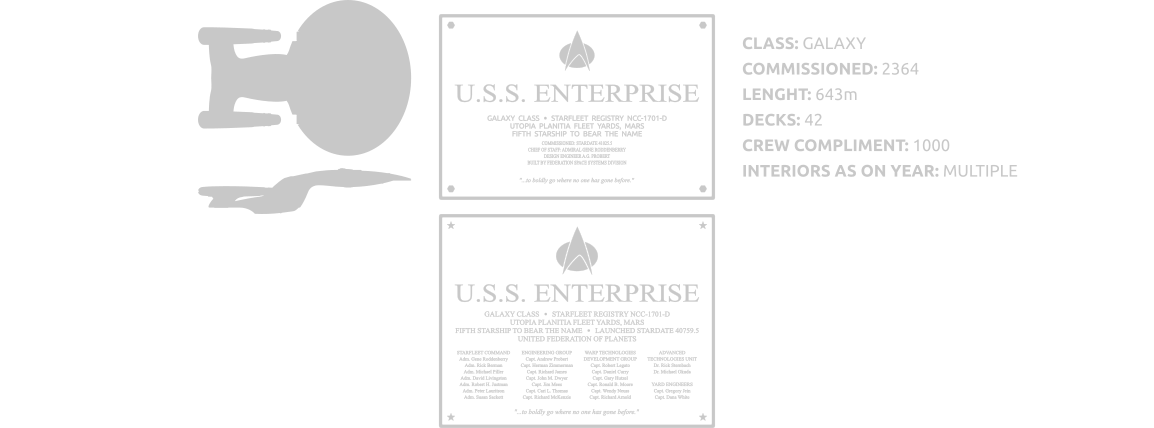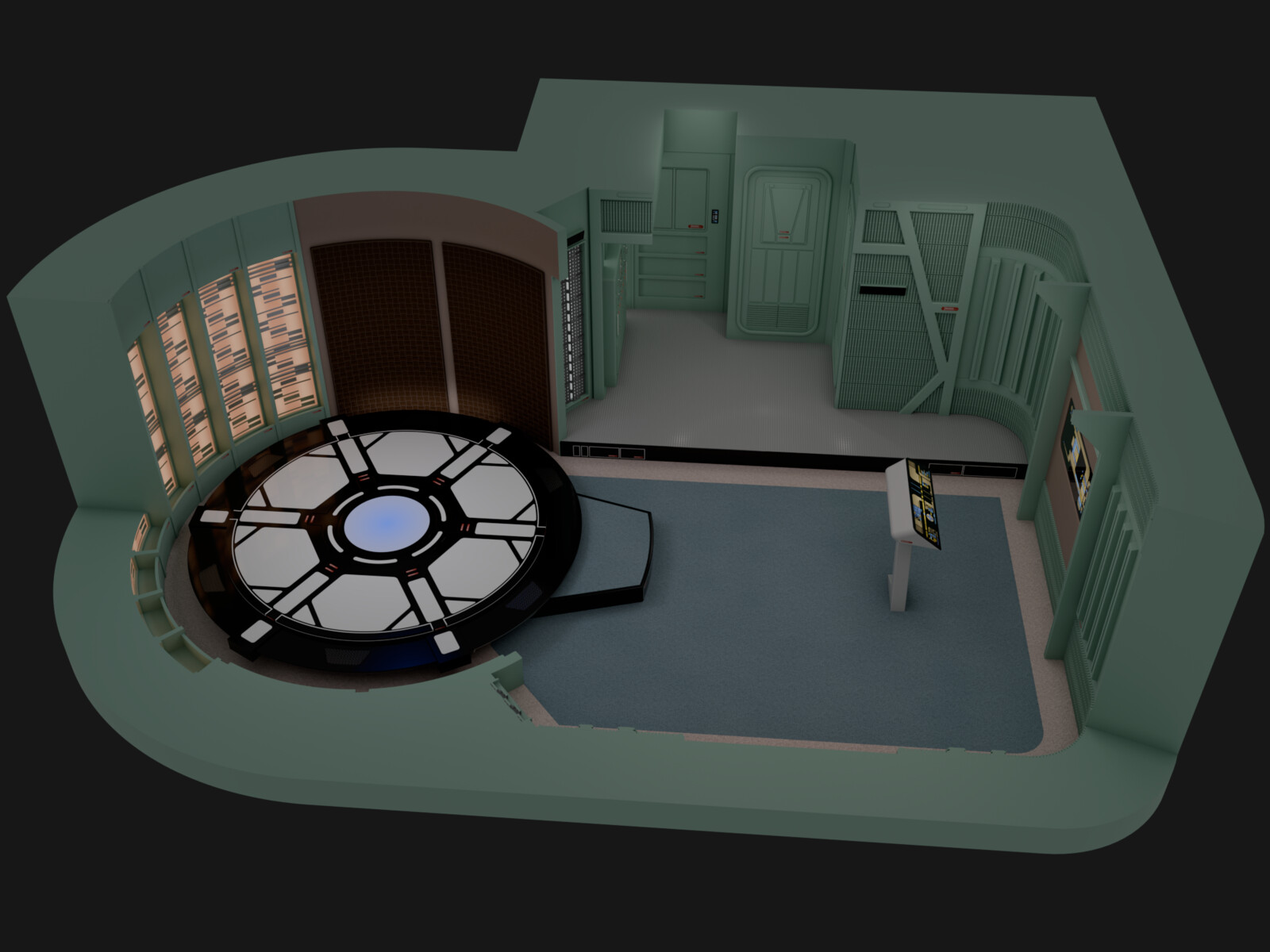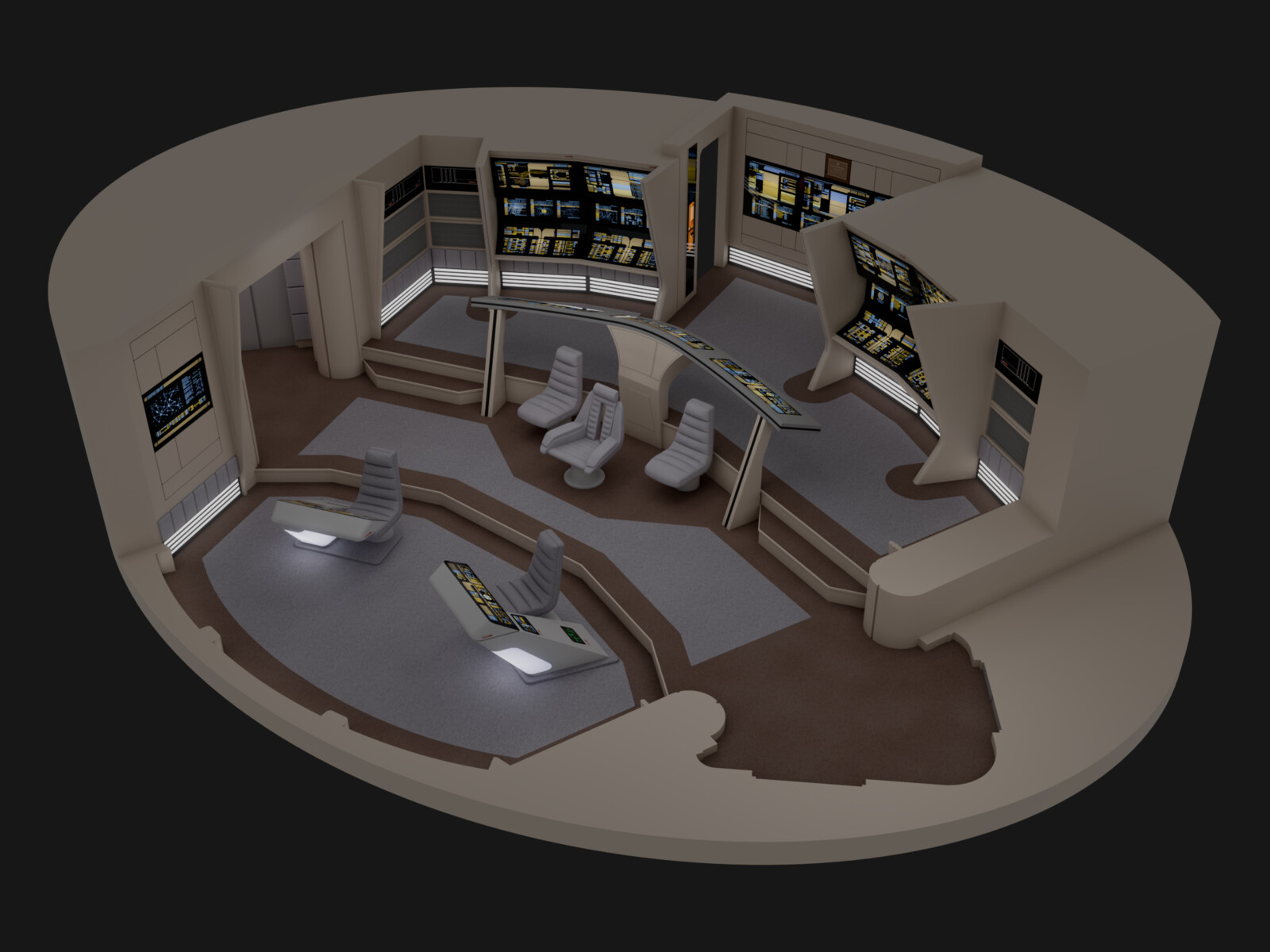Designed to be a "self-sufficient city in space", the Galaxy-class project was the most ambitious in the history of Starfleet, spanning over 20 years of active development. Its intention was to enable longer duration deep-space assignments, as such a great deal of thought was given to the well-being of the crew. This included allowing and expecting family members, civilian volunteers and even children on board permanently. This necessitated a new approach to its internal design and layout, with a heavier emphasis on lounges and common areas than previous designs. Schools and recreational facilities of many kinds needed to be incorporated as well.
To protect these areas and the civilian population, Galaxy-class ships were capable of separating its primary hull from the rest of the ship. Non-combatants would remain safe on the primary hull, while the secondary hull which housed most of the weapons and power systems engaged in any dangerous mission. This saucer separation however proved to be a time consuming affair, which was often at odds with the fast response needed in a crisis situation. Because of this, in practice it was seldom used.

USS Enterprise NCC-1701-D

The Federation flagship for over 8 years, the Enterprise-D was the third Galaxy-class starship to enter service (after the prototype Galaxy, and Yamato). It was commissioned on the 4th of October 2364, under the command of Captain Jean-Luc Picard. It had a distinguished career of exploration and discovery, including over 40 first contacts with sentient species.
The ship's successful career was cut short in 2371. Just after receiving a major refit, the ship was attacked over Veridian III by a renegade Klingon ship under the command of the Duras sisters. While Enterprise was victorious in the end, its warp core had sustained enough damage that a breach was inevitable. The crew managed to escape to the saucer section and separate the ship, but the warp core explosion pushed the saucer into the Veridian III gravity well, where it crash landed. Casualties were low among the crew, which was eventually rescued by starships Farragut, Brattain, and Trosper.
Though the ship was deemed lost to Starfleet, the saucer section was eventually retrieved from Veridian III, as its discovery by the pre-warp Veridian IV natives would have disrupted their natural course of development. By the 2390's the Starfleet Museum started restoring the Enterprise-D. The interior was returned to its pre-refit look; and the secondary hull was replaced by that of the USS Syracuse.
The ship’s motto, inscribed on its dedication plaque, was a quote by Zefram Cochrane: “...to boldly go where no one has gone before.”
USS Odyssey NCC-71832

The fourth Galaxy-class starship commissioned (following Galaxy, Yamato, and Enterprise); Odyssey was under the command of Captain Declan Keogh, and was assigned to explore the frontier beyond the Federation-Cardassian DMZ, with the tacit implication of showing the flag in case of any attempts at renewed hostilities by the Cardassians.
Following the rise of the Maquis threat in the late 2360's, Odyssey's assignment also included active patrols on the border. The ship was undergoing one such patrol in 2370 when Commander Benjamin Sisko, CO of Deep Space 9, was taken prisoner by the Jem'Hadar in the Gamma Quadrant.
After offloading non-essential personnel at DS9, Odyssey mounted a rescue operation alongside three Danube-class runabouts from DS9. While they were successful in rescuing Sisko, Odyssey came under heavy fire from three Jem'Hadar fighters. While retreating back to the wormhole to return to the Alpha Quadrant, one of the fighters made a suicide run at the Odyssey, colliding with the ship's secondary hull and causing an immediate antimatter containment failure, destroying the ship with all hands.
The ship’s motto, inscribed on its dedication plaque, was “Its origin and purpose still a total mystery...”













